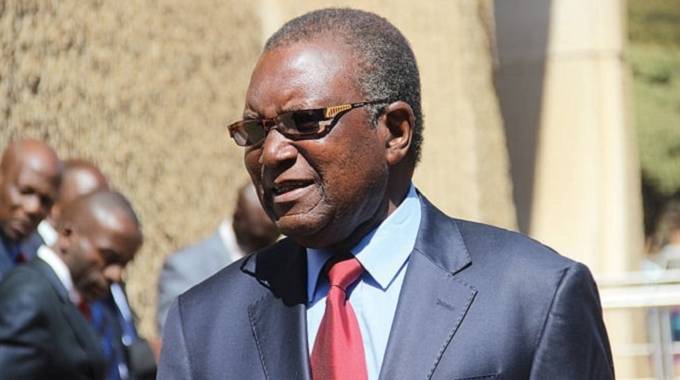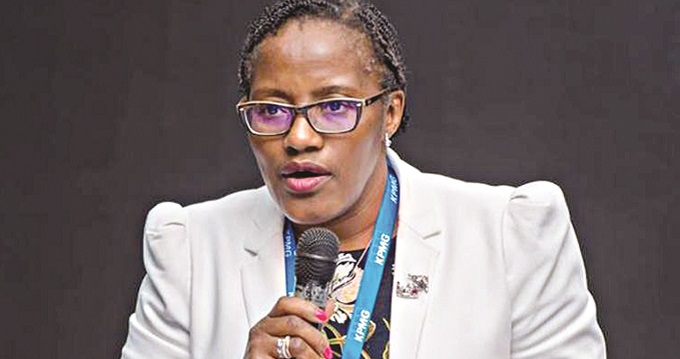EDITORIAL COMMENT: Hwange expansion project to boost economy, reduce imports

INFRASTRUCTURE development is at the heart of Government’s vision to attain a middle income economy by 2030 and President Mnangagwa’s administration has prioritised key projects in this sector.
Apart from refurbishing the country’s road network, rail infrastructure, telecommunications system, dams and bridges, the Government is working on improving Zimbabwe’s electricity generation capacity as this is key to economic development.
As the economy expands, the demand for power will increase, hence Zimbabwe’s drive to improve power generation.
The Sadc region faces a power deficit because of its old power plants which are failing to match expanding populations and economies hence Zimbabwe cannot continue to rely on its neighbours for power imports.
In addition, inadequate transmission infrastructure and lack of funds are causing electricity deficits with Zimbabwe among the countries in this predicament.
Over the years, the country has sought to address this problem through a number of initiatives among them the Kariba South Extension Project and the Hwange Expansion Project.
Apart from these two major projects, the Zimbabwe Energy Regulatory Authority has also licensed a number of independent power producers to augment the work being done by the Zimbabwe Power Company.
Smaller existing power stations such as Bulawayo, Munyati and Harare are being refurbished to add power to the national grid.
In this regard, the country is on track to achieving its objectives of being self-sufficient in its energy needs.
In March last year, President Mnangagwa commissioned and switched on the $533 million Kariba South Power Station Extension Project which added another 300 megawatts to the national grid.
The newly commissioned Units 7 and 8 were envisaged to reduce Zimbabwe’s 600MW import bill.
At that time, the average maximum daily power demand in Zimbabwe was about 1 600 megawatts, against a backdrop of an average internal generation capacity of about 1 200 megawatts resulting in a deficit in supply of about 600 megawatts, which was met through importation.
The 300 megawatts thus halved that deficit.
On Friday, construction of the $1,4 billion Hwange Expansion Project for Unit 7 and 8 started in earnest, with the laying of the foundation stone at Hwange Power Station. The event marked commencement of real construction works with the project expected to be completed in 2022.
Power generation will increase from the current 600MW to 1200MW when the project is commissioned. At the moment, Hwange is producing 600MW against installed capacity of 920MW. ZPC targets to achieve 30 percent completion of the Hwange expansion project by the end of this year.
“We shall ensure to successfully achieve 30 percent completion for the Hwange 7 and 8 project in 2019,” said the power company on its website on Monday.
“As we begin a new year, it is my hope that we continue to work together on our major projects, and to further improve our operations in order to supply electricity sustainably.”
ZPC also plans to complete Unit 3 major overhaul at Hwange as well as commencing construction works for the Bulawayo and Harare repowering projects, and Deka upgrading project.
It said the Hwange extension project, which commenced on 1 August 2018, was making steady progress as the main power building excavation began on December 1 last year.
“The warehouse, fabrication workshop, contractor’s camp, temporary office, batching plant and workshops are currently under construction and are 71 percent to completion,” it said.
“Design review meetings between Sino-Hydro designers and ZPC design team were also held in December and were completed successfully.”
The Minister of Energy and Power Development, Dr Joram Gumbo, who visited Hwange on Friday to assess progress on the project, said he was delighted that work was on schedule.
“May I hasten to say since the inception of the expansion works, the project has seen considerable progress on the ground and is on schedule.
“Today marks an important milestone. The process of laying the foundation signifies the commencement of real construction works in a journey that will take us to the promised land of security of electricity supply as we set our sights towards the successful implementation of Vision 2030 which will transform Zimbabwe into an upper middle class economy,” said Dr Gumbo, adding that the project would reduce electricity imports and save foreign currency.
We welcome the commencement of construction works at Hwange and are hopeful that the contractor will meet the set deadlines and deliver an additional 600MW to the national grid.
This will not only reduce Zimbabwe’s over-reliance on power imports but will see the country exporting electricity to its neighbours and earning the much needed foreign currency.
Self-sufficiency in power generation will also allow industry to ramp up production particularly the mining sector which relies on power for most of its activities. We also wish to express our gratitude to the Chinese contractor Sinohydro for its professionalism in executing the project and China Exim Bank for providing funding for the works.
Zimbabwe is indeed indebted to its all-weather friend, China, for standing by it during its hour of need.












Comments